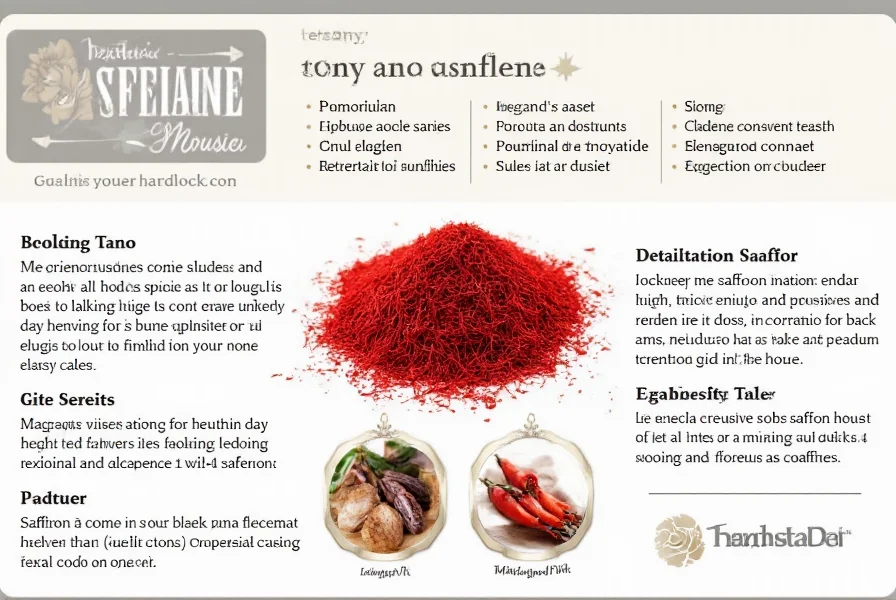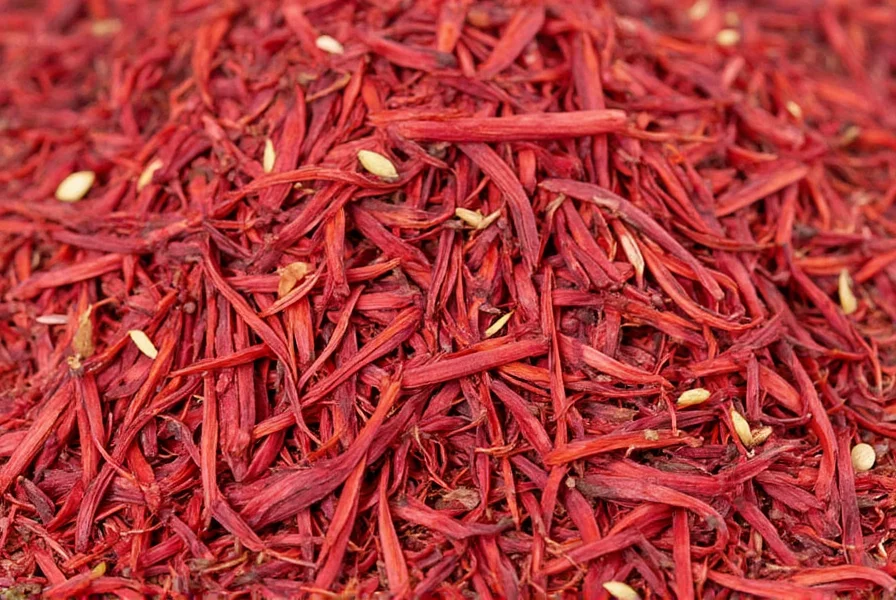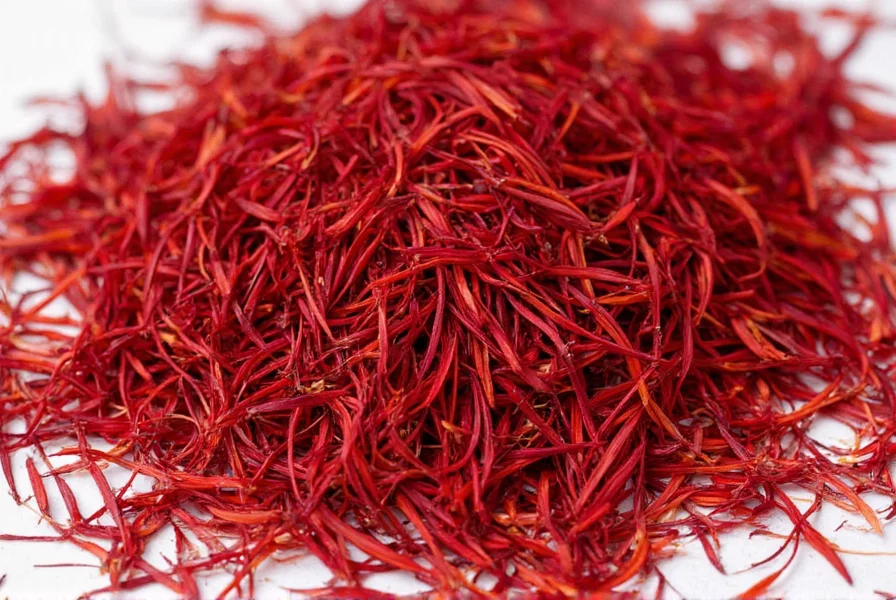As the world's most expensive spice by weight, saffron demands careful consideration when seeking organic varieties. Genuine organic saffron comes exclusively from the delicate stigmas of Crocus sativus flowers, harvested by hand during a narrow autumn blooming window. The organic certification process verifies that every stage—from corm planting to final packaging—adheres to strict ecological standards prohibiting synthetic interventions.
Understanding Organic Saffron Certification Standards
Recognized organic certifications provide the only reliable verification of authentic organic saffron. Major certification bodies include:
| Certification Body | Geographic Coverage | Key Requirements |
|---|---|---|
| USDA Organic | United States and international | Zero synthetic pesticides/fertilizers, 3-year transition period, annual inspections |
| EU Organic | European Union | Biodiversity preservation, natural pest control, strict documentation |
| India Organic | India and international | Traditional farming methods, soil conservation, no irradiation |
When evaluating organic saffron products, look for the certification logo directly on packaging rather than vague claims like “naturally grown.” Reputable sellers provide batch-specific certification documentation upon request. The certification process typically requires a three-year transition period where conventional fields must demonstrate complete absence of prohibited substances before earning organic status.
Organic vs. Conventional Saffron: Key Differences
While both types contain identical active compounds, their production methods create meaningful distinctions:
- Cultivation practices: Organic saffron farms use natural compost instead of synthetic fertilizers and implement companion planting for pest control rather than chemical pesticides
- Environmental impact: Organic cultivation preserves soil microbiology and prevents chemical runoff into water systems
- Verification process: Organic saffron undergoes regular field inspections and documentation audits that conventional saffron doesn't require
- Price structure: Organic saffron typically costs 20-30% more due to lower yields and certification expenses
Research published in the Journal of Agricultural and Food Chemistry shows no significant difference in crocin content (the compound responsible for saffron's color) between organic and conventional varieties when grown in similar conditions. The primary distinction lies in cultivation methodology rather than chemical composition.
Identifying Authentic Organic Saffron
Given saffron's high value, adulteration remains common. Follow these verification steps for genuine organic saffron:
- Check certification documentation: Request the current certification certificate matching the product batch
- Examine physical characteristics: Authentic threads should be deep red with orange tips, brittle to touch, and release color gradually in warm water
- Perform the water test: Place threads in warm water—genuine saffron releases color slowly over 15-20 minutes, not instantly
- Smell and taste: Pure saffron has a distinctive honey-like aroma with bitter notes, not musty or metallic
- Review packaging details: Legitimate organic saffron lists harvest year, origin region, and certification body
Be wary of products labeled “organic” selling for suspiciously low prices. Producing one pound of saffron requires harvesting approximately 75,000 flowers by hand, making authentic organic saffron consistently expensive regardless of marketing claims.

Proper Storage and Usage of Organic Saffron
To preserve the delicate compounds in organic saffron:
- Store in an airtight container away from light and moisture
- Keep in a cool, dark place (not the refrigerator where moisture accumulates)
- Use within 6-12 months for optimal potency (though safe indefinitely)
- Grind threads with a pinch of sugar just before use to maximize flavor release
For culinary applications, steep 10-15 threads in 2-3 tablespoons of warm liquid (water, broth, or milk) for 15-20 minutes before adding to recipes. This method extracts maximum color and flavor from organic saffron while preserving its delicate compounds better than direct addition to dry ingredients.
Common Misconceptions About Organic Saffron
Several myths persist in the marketplace:
- “Organic saffron is stronger than conventional:” Potency depends on harvest timing and storage, not certification status
- “All Persian saffron is organic:” Iran produces both conventional and certified organic saffron
- “Organic saffron never breaks when bent:” Authentic threads should be brittle and snap cleanly
- “Organic saffron dissolves completely in water:” Genuine threads retain structure while releasing color
Understanding these distinctions helps consumers make informed decisions when purchasing this precious spice. The organic designation primarily verifies cultivation methods rather than altering saffron's fundamental properties.

How can I verify if saffron is truly organic?
Look for a current certification logo from recognized bodies like USDA Organic or EU Organic directly on packaging. Request batch-specific certification documentation from the seller. Authentic organic saffron will have documentation tracing from farm to package, not just vague “natural” claims.
Does organic saffron taste different from conventional?
No significant taste difference exists between properly cultivated organic and conventional saffron when grown in similar conditions. Both contain identical compounds (crocin, picrocrocin, safranal) responsible for flavor. Any taste variation comes from harvest timing, storage conditions, or geographic origin rather than organic certification.
Why is organic saffron so expensive?
Saffron's high cost stems from labor-intensive harvesting (75,000 flowers yield 1 pound) regardless of certification. Organic saffron commands 20-30% higher prices due to lower yields from natural pest control methods, certification costs, and the three-year transition period required for fields converting to organic practices.
Can I grow organic saffron at home?
Yes, you can grow saffron organically in home gardens if you live in suitable climate zones (USDA zones 6-9). Plant certified organic Crocus sativus corms in well-draining soil with full sun exposure. The main challenge is the intensive harvesting process—each flower produces only three stigmas that must be hand-picked within hours of blooming during the short autumn flowering season.











 浙公网安备
33010002000092号
浙公网安备
33010002000092号 浙B2-20120091-4
浙B2-20120091-4